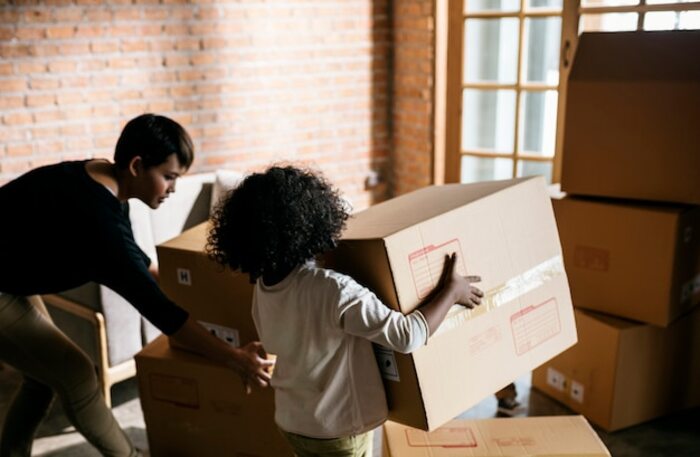Navigate the transition: guide for a frictionless change

Navigating the transition from one home to another can be overwhelming, but with the right guidance, this process can become an enriching and seamless experience. In this article, you will discover effective strategies to adapt to your new environment, optimizing each stage of your move. Get ready to turn the challenge of changing homes into an exciting adventure full of opportunities and personal growth. Keep reading and become the master of your own move!
The importance of prior planning
Pre-planning is essential to ensure a successful transition when moving to a new home. Before packing the first box, it is crucial to take the time to create a detailed plan that addresses every aspect of the process. From selecting the moving day to establishing an inventory of belongings, good planning helps minimize stress and avoid unpleasant surprises. By outlining a schedule and assigning specific tasks, you can ensure that everything is under control and that no important task is overlooked along the way.
In addition, involving the entire family in this stage can significantly simplify the process. By discussing expectations and responsibilities in advance, each member will clearly understand their role during the move, fostering a collaborative environment and reducing tensions. Prior planning also allows you to identify the essential items you will need immediately upon arriving at your new home, ensuring a smoother transition. With a well-defined strategy, you can turn what could be a chaotic moment into a pleasant and organized experience.
2. How to efficiently organize your belongings
Organizing your belongings efficiently is a key step in any moving process. Start by sorting your items into categories: what you want to take with you, what you can donate, and what is ready to be discarded. This assessment will not only help you reduce the volume of things you need to transport, but it will also allow you to reflect on what you truly value and use in your daily life. Use labeled boxes or bags to make identifying each group easier, and consider implementing the "box by room" method to keep everything organized from the start.
Once you have decided what to take, it is essential to maximize the space inside the boxes and containers. Take advantage of empty spaces by filling them with smaller items, such as clothing or kitchen utensils. Additionally, when packing fragile items, use padded materials like bubble wrap or towels to properly protect them. Don't forget to make a detailed inventory of everything you are packing; this will not only help you keep track during the move but will also be useful when unpacking in your new home. With meticulous organization, you can transform the moving experience into an opportunity to revitalize your environment and give new purpose to every corner of your house.
3. Strategies to reduce stress during the move.
When facing a move, it is natural for feelings of anxiety and stress to arise due to the number of tasks to be completed and the imminent changes. One of the most effective strategies to reduce stress is to plan ahead. Creating a detailed schedule that breaks down tasks into manageable stages can provide clarity and allow you to tackle each aspect without feeling overwhelmed. For example, set specific dates for packing, hiring moving services, or cleaning the old home. This organization will not only help you stay on track but will also give you a sense of control over the process.
Another valuable technique is to involve friends and family in the move. Sharing this experience with your loved ones can transform what is often a solitary task into a memorable moment full of emotional support. Organize a packing day where everyone can collaborate, enjoy music, and perhaps share some snacks. Additionally, consider establishing themed days; for example, a pizza night after a long day of work can be a great incentive to keep the group's morale high. At the end of the day, don't forget to set aside time for yourself: small breaks to relax or enjoy your favorite coffee can make a big difference in your emotional well-being during this busy period.
4. Emotional adaptation: facing changes with resilience
Emotional adaptation during a move is essential for effectively facing changes. When leaving behind a home, it is normal to experience a mix of feelings: nostalgia, anxiety, and excitement. Acknowledging these emotions is the first step toward resilience. Allow yourself to feel what you feel, but don’t get stuck in it. Practice self-compassion and seek ways to channel your emotions, whether through conversations with friends, journaling, or simply dedicating time to activities you enjoy. This process will help you better manage transitions and see yourself as an active agent in your own story.
Additionally, building a positive mindset can be a great ally when facing the challenges of moving. Instead of focusing only on what you are losing, try to concentrate on what you are gaining: new opportunities, experiences, and friendships that may arise in your new environment. Make a list of the exciting things about your new house and neighborhood; this may include places to explore, community activities, or even the possibility of redecorating your favorite spaces. Creating rituals that mark the beginning of this new stage can also help you feel more connected to your new home and cultivate a resilient attitude towards change.
5. Getting to know your new neighborhood: keys to integrate quickly
Getting to know your new neighborhood is a fundamental step to quickly integrate and feel at home. Start by exploring the nearby streets, visiting local shops, cafes, and parks. Don't just observe; interact with neighbors and merchants. A simple greeting or a conversation about the neighborhood can open doors to new friendships and provide valuable information about community activities and events. Remember that being present in the environment is key to building your social network.
Additionally, consider joining local groups or clubs that align with your interests. Whether it's a book club, yoga classes, or sports activities, these opportunities will not only allow you to meet new people but also help you learn more about the local culture. Participating in community events, fairs, or markets is also an excellent way to immerse yourself in neighborhood life. The more you invest in your community, the quicker you will feel part of it; so don’t hesitate to take that first step towards a successful and rewarding integration.
6. Tips to make your new house feel like home
To make your new house feel like a home, start by personalizing the spaces with elements that represent you. Place family photographs, artwork, or souvenirs from your travels in visible spots. These personal touches not only beautify the environment but also evoke emotions and memories, creating a deeper connection with your new space. Additionally, consider integrating colors and textures that feel welcoming to you and reflect your personal style; this can be through cushions, curtains, or rugs that add warmth and comfort.
Another essential tip is to establish daily routines in your new home. Including habits like morning coffee time in your kitchen or family game nights in the living room helps create meaningful and memorable moments. Familiarity is key to feeling comfortable; so take the time to explore every corner of your house, discover how to make the most of the spaces, and find those special places where you will enjoy spending time. Over time, these little rituals will contribute to forging a sense of belonging and well-being in your new environment.
7. Useful resources: digital tools to facilitate the move
When moving, having the right digital tools can make the difference between a chaotic process and an organized one. There are numerous apps and platforms specifically designed to facilitate every aspect of this journey. For example, apps like "Sortly" allow you to create a visual inventory of your belongings, helping you know exactly what you have and where it is. Similarly, tools like "Move Loot" or "OfferUp" enable you to sell or donate items you no longer need, helping to reduce clutter before the move. These digital solutions not only optimize logistics but also encourage more informed decision-making about what you will take with you to your new home.
In addition to inventory organization, there are platforms that offer assistance in planning and executing the move itself. Applications like "TaskRabbit" connect users with local professionals willing to help with specific tasks, from packing to loading and unloading trucks. You can also find time management tools to coordinate schedules and ensure everything is ready for moving day. Utilizing these technologies not only alleviates the stress associated with the process but also allows you to enjoy the change more by having everything under control. With these digital resources at your disposal, you will be better prepared to face your move with confidence and effectiveness.
8. Keeping connections: how not to lose touch with old friends
Maintaining connections with old friends during a home transition is essential for preserving the emotional support network you have built over time. Physical distance does not have to mean the loss of those valuable relationships. Establishing a regular schedule for calls, video conferences, or even text messages can help you stay in touch. Additionally, creating groups in messaging apps can facilitate communication and allow everyone to stay updated on each other's lives, regardless of the distance. Another effective strategy is to plan mutual visits. If possible, organize getaways where you can host your friends in your new home or make a trip to visit them. These shared experiences will not only strengthen the bonds but also give you the opportunity to show them your new surroundings and explore new adventures together. By integrating your friends into this new stage, you can enjoy the excitement of change without sacrificing the relationships that are important to you.
Also remember to take advantage of social media as a powerful tool to stay connected. Post updates about your life in your new home and share special moments; this will not only fuel interactions with your friends but also give them a sense of belonging to your new experience. Keeping these connections alive is key to making the transition more manageable and enriching.



